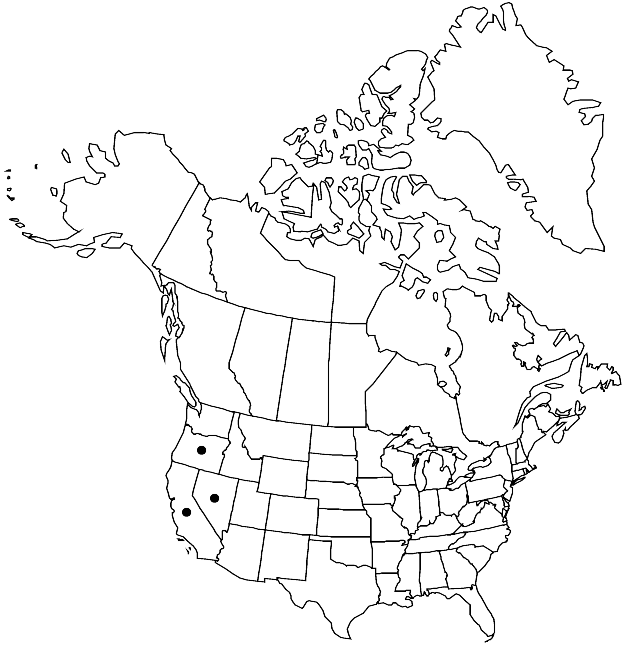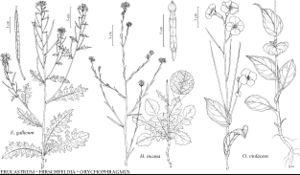Difference between revisions of "Hirschfeldia incana"
Fl. Tarn Garonne, 19. 1847.
FNA>Volume Importer |
FNA>Volume Importer |
||
| Line 15: | Line 15: | ||
|name=Brassica adpressa | |name=Brassica adpressa | ||
|authority=(Moench) Boissier | |authority=(Moench) Boissier | ||
| − | }}{{Treatment/ID/Synonym | + | }} {{Treatment/ID/Synonym |
|name=Brassica geniculata | |name=Brassica geniculata | ||
|authority=(Desfontaines) Ball | |authority=(Desfontaines) Ball | ||
| − | }}{{Treatment/ID/Synonym | + | }} {{Treatment/ID/Synonym |
|name=Hirschfeldia adpressa | |name=Hirschfeldia adpressa | ||
|authority=Moench | |authority=Moench | ||
| − | }}{{Treatment/ID/Synonym | + | }} {{Treatment/ID/Synonym |
|name=Sinapis geniculata | |name=Sinapis geniculata | ||
|authority=Desfontaines | |authority=Desfontaines | ||
| Line 39: | Line 39: | ||
|elevation=100-1600 m | |elevation=100-1600 m | ||
|distribution=Calif.;Nev.;Oreg.;Eurasia;nw Africa;introduced also in South America;s Africa;Atlantic Islands;Pacific Islands (Hawaii);Australia. | |distribution=Calif.;Nev.;Oreg.;Eurasia;nw Africa;introduced also in South America;s Africa;Atlantic Islands;Pacific Islands (Hawaii);Australia. | ||
| − | |discussion=<p>Hirschfeldia incana was first collected in North America in 1895 in the San Bernardino region, and by 1936 it was described as “already a serious agricultural pest, spreading freely over dry, unbroken ground and flourishing chiefly during the arid summer season” (W. L. Jepson 1909–1943, vol. 2).</p><!-- | + | |discussion=<p><i>Hirschfeldia incana</i> was first collected in North America in 1895 in the San Bernardino region, and by 1936 it was described as “already a serious agricultural pest, spreading freely over dry, unbroken ground and flourishing chiefly during the arid summer season” (W. L. Jepson 1909–1943, vol. 2).</p><!-- |
| − | --><p>Hirschfeldia incana can be confused with Brassica nigra because both have fruits appressed to the rachis. The former is distinguished from the latter by its distinctly shorter fruit, seeded and often swollen beak, and smaller petals.</p> | + | --><p><i>Hirschfeldia incana</i> can be confused with <i>Brassica nigra</i> because both have fruits appressed to the rachis. The former is distinguished from the latter by its distinctly shorter fruit, seeded and often swollen beak, and smaller petals.</p> |
|tables= | |tables= | ||
|references= | |references= | ||
| Line 65: | Line 65: | ||
|publication year=1847 | |publication year=1847 | ||
|special status= | |special status= | ||
| − | |source xml=https://jpend@bitbucket.org/aafc-mbb/fna-data-curation.git/src/ | + | |source xml=https://jpend@bitbucket.org/aafc-mbb/fna-data-curation.git/src/8f726806613d60c220dc4493de13607dd3150896/coarse_grained_fna_xml/V7/V7_658.xml |
|tribe=Brassicaceae tribe Brassiceae | |tribe=Brassicaceae tribe Brassiceae | ||
|genus=Hirschfeldia | |genus=Hirschfeldia | ||
Revision as of 17:59, 18 September 2019
Stems (2–)4–15(–20) dm, densely pubescent proximally, trichomes retrorse. Basal leaves: petiole 1–4(–10) cm; blade (3–)4–22(–35) cm × 15–60(–80) mm, lobes 1–6(–9) each side, ovate or lanceolate, (smaller than terminal), terminal lobe broadly ovate, surfaces densely pubescent. Cauline leaves (distal) ± sessile; blade oblong to lanceolate, similar to basal, (smaller distally). Fruiting pedicels (appressed to rachis, almost as thick as fruit), 2–4(–5) mm. Flowers: sepals 3–5 × 1.2–2 mm; petals 5–10 × 2.5–4.5 mm; filaments 3–5 mm;anthers 1–1.5 mm. Fruits 0.7–1.5(–1.7) cm × 1–1.7 mm; valves 6–10 mm; terminal segment 3–6 mm. Seeds 0.9–1.5 mm diam. 2n = 14.
Phenology: Flowering Apr–Nov.
Habitat: Roadsides, waste places, disturbed areas, canyons, creek bottoms, dry fields, open desert
Elevation: 100-1600 m
Distribution

Calif., Nev., Oreg., Eurasia, nw Africa, introduced also in South America, s Africa, Atlantic Islands, Pacific Islands (Hawaii), Australia.
Discussion
Hirschfeldia incana was first collected in North America in 1895 in the San Bernardino region, and by 1936 it was described as “already a serious agricultural pest, spreading freely over dry, unbroken ground and flourishing chiefly during the arid summer season” (W. L. Jepson 1909–1943, vol. 2).
Hirschfeldia incana can be confused with Brassica nigra because both have fruits appressed to the rachis. The former is distinguished from the latter by its distinctly shorter fruit, seeded and often swollen beak, and smaller petals.
Selected References
None.
